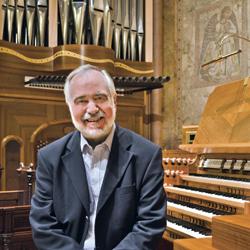
Jon Gillock is featured on a new recording on the Raven label, Méditations sur le Mystère de la Sainte Trinité (OAR-981), first in a series of recordings of Olivier Messiaen’s complete works for organ.
The series features the organ built by Pascal Quoirin of Saint-Didier, France, in 2011 at the Church of the Ascension in New York City. This organ was conceived to play the works of Messiaen specifically, and Gillock was greatly involved in the design of the instrument to achieve the tonal characteristics, colors, dynamics, and power required by Messiaen’s scores.
For information: https://www.ravencd.com.



